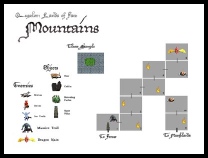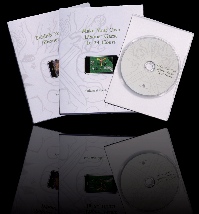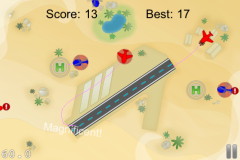How did they make the animated water in the background of Wheeler’s Treasure? That’s probably a question you’ve never asked yourself but it’s in fact a very interesting process that one of the developers explains in this video:
The original post on the Two Lives Left blog, dubbed: The cool effect that no one noticed includes the download of the water texture.
Continuing with yesterday’s Box2D Car demo I’d like to stay on the topic of Box2D and present to you the Tilemap based Box2D world put together by theTconcept, a website hosted by a group of italian and mexican designers, writers and coders.
In their tutorial they explain how to create Box2D collisions from a Tiled Map Editor world, by using the object group layer. The one you can use to place arbitrary rectangles on in Tiled. The resulting Xcode project is available for download.
Today’s Linkvent Calendar entry comes from David Sutoyo. His second Cocos2D game, Balloon Ride, was published on the App Store on Dec 1st. David took some time to write a postmortem about making Balloon Ride. He starts out by saying that programming in Objective-C is hard, game design is even harder but marketing is the hardest part. However, he concludes that the overall design process is fun and he is now toying with the idea of using Corona because programming in Lua is simpler than Objective-C.
David also wrote a mini-postmortem about his first Cocos2D game Memory Flash.
Watch the Balloon Ride gameplay video:
Yesterday I introduced you to the Rampant Coyote with his Eight Tips to Help You Finish Your Indie Game. Today’s Linkvent Calendar entry follows in these footsteps with a blog post from Owen Goss titled Indie Challenges.
Actually, it’s two posts and it follows his original, enthusiastic post I’m Indie, and I’m Proud. Surely it can’t be all good, so Indie Challenges throws some light on the challenges indie developers face, such as unstable income, blurring the lines between life and work, the paperwork (@Owen: there are tax consultants for that, and I pay just over €40/$60 per month - well worth it!), occasionally feeling like a failure (@Owen: no, you’re not alone, been there … repeatedly - but much worse is to feel like a failure when you’re employed and still believe that you depend on that job).
I’ve found this post through #iDevBlogADay which is a wonderful website of high-profile bloggers putting out two posts every day. A few days ago I joined the waiting list as #52.
Add your link to the Cocos2D Linkvent Calendar
Do you have something to share with the Cocos2D community? I haven’t received enough submissions to fill all the days until Xmas, although I do have enough links to post one each day, I’d rather post a link to your website or blog post.
UPDATE: here’s the summary of the webinar which includes a link to the recorded session.
Mohammad Azam will be hosting a FREE webinar: Introduction to iPhone Game Development Using the Cocos2D framework.
This webinar takes place TOMORROW (Dec 11th)! I replicate his blog post here with the crucial info:
The webinar will help getting the new comers get started with iPhone development. It will be all code based with minimal or no slides. The webinar will be hosted on www.freebinar.com. Additional details are listed below:
Webinar URL: http://www.freebinar.com/highoncoding1
Date: 12/11/2010 (December 11 2010)
Time: 11:00 AM (US Central Time)
Limit: 150 people
Mohammad is originally a .NET programmer and frequent speaker at tech events. Recently he started diving into iOS development. He has written several tutorials about Cocos2D and he’ll get another Linkvent Calendar post soon that lists all of the Cocos2D screencasts he made. Follow him on Twitter @azamsharp and check out his iosdevblog.
Add your link to the Cocos2D Linkvent Calendar
Do you have something to share with the Cocos2D community? I haven’t received enough submissions to fill all the days until Xmas, although I do have enough links to post one each day, I’d rather post a link to your website or blog post.
Andreas Löw has released an updated version (v2.1) of his Texture Atlas creation tool called Texture Packer (Pro). The Pro version ($17.95) provides you with a GUI interface, the non-Pro version ($9.95) is a command line tool. The latter actually runs behind the scenes in the GUI version.
Here’s the list of changes introduced in Texture Packer v2.1:
The free version is now enhanced so that you can create textures up to 2048×2048 pixels without paying a single cent!
The free PVR/PVR.CCZ previewer lets you view the images - just doubleclick them in finder! Including preview for PVRTC.
Other features:
- *.pvr and *.pvr.ccz previewer! (free for all)
- AutoSD allows automatically creation of standard resolution images from highres images (-auto-sd) (pro/cli)
- Process *.tps files from command line (pro)
- Drag’n'drop sprites to tree view to add them
- PVRTC2/PVRTC4 compression
- Enhanced color reduction quality (pro/cli)
- Additional dithering algorithm (Atkinson)
- Linear quantization
- Nearest neighbour quantization
- Premultiply alpha (pro/cli)
- Option to disable automated alias creation
- Choose heuristics for MaxRects algorithm (pro/cli)
- Creation of non power of 2 textures
The update is available using auto-update or download from: http://texturepacker.com/download/
Read more about the Texture Packer features, read the Texture Packer manual (PDF) or go directly to the shop (Share*it!).
Add your link to the Cocos2D Linkvent Calendar
Do you have something to share with the Cocos2D community? I haven’t received enough submissions to fill all the days until Xmas, although I do have enough links to post one each day, I’d rather post a link to your website or blog post.











